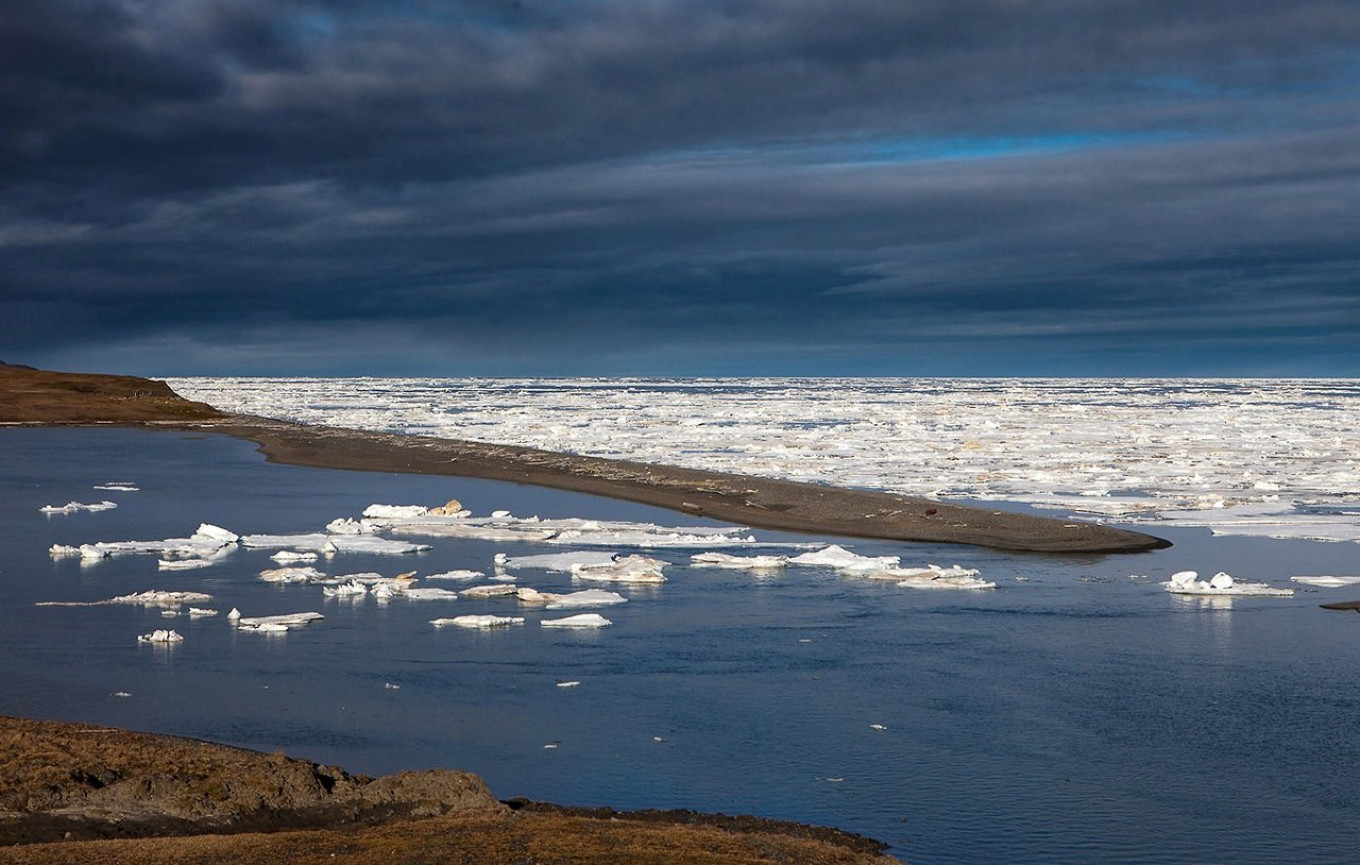
Arctic sea ice is on track to continue shrinking because of climate change and could soon cover half the area it did in the late 1970s, a leading Russian climate scientist told The Moscow Times.
“Sea ice continues to shrink by approximately 10% every decade and this is a very fast-paced trajectory,” said Vladimir Semenov, Deputy Director of the Obukhov Institute of Atmospheric Physics in Moscow. “Sea ice coverage will soon be half of what it was in the late 1970s,” he added, without giving a timeframe.
For the first time since records began Russia’s Laptev Sea had not frozen by late October, a milestone that came on the heels of a freakishly hot summer in Russia’s Arctic and Siberian regions.
The town of Verkhoyansk, one of the coldest inhabited places on Earth, hit an unprecedented temperature of 38 degrees Celsius in June, wildfires raging in Siberia had emitted more carbon dioxide by the end of August than in all of 2020 and melting permafrost may have caused the Arctic’s worst ever fuel spill.
Semenov called the Laptev Sea’s failure to freeze “expected news,” and pointed out that the Barents Sea, which is also in the Arctic, has been almost completely ice-free in winter for a number of years. He forecast that the Eastern Siberian Sea will be the next to stop freezing in winter.
Arctic sea ice usually reaches its maximum levels by November after shrinking in the spring and summer. In addition to the belated freezing, the Laptev Sea thawed much earlier in 2020 than in any previous year since 1979.
Andrei Kiselev, the leading research scientist at the Voeikov Main Geophysical Observatory in St. Petersburg, agreed with Semenov, saying that the late freezing of the Laptev Sea should no longer be treated as something out of the ordinary.
“The Laptev Sea was always covered with ice by late October and this year it didn’t happen. We know that the Arctic is warming faster than the rest of the world, and even faster than Russian land territories, so the late freezing of the Laptev Sea is in line with overall tendencies,” Kisilev said.
Scientists worldwide attribute the lack of ice to early summer warming and a Siberia’s heatwave, as well as warm Atlantic currents flowing into the Arctic. Climate change has reduced sea ice coverage across the whole of the Arctic Ocean in recent decades, with 2019 tying for second-lowest in recorded history.
“There’s so much more heat in the ocean now than there used to be that the pattern of autumn ice growth has been completely disrupted,” NSIDC director Mark Serreze wrote in The Conversation. Ocean temperatures have risen by more than five degrees Celsius in the area, according to The Guardian newspaper.
Both Russian scientists agreed that the effects of the Laptev Sea warming will be noticed only at a local level.
“It will influence the biosphere of the region but we should not expect any disastrous global consequences from it. It is, rather, just another sign of ongoing transformations in the Arctic,” Kiselev said.
Polar bears
Polar bears will be among the species most affected by the Laptev Sea’s late freezing, climatologist Alexander Kislov told the Meduza media outlet.
“By now, they should have set off on the journey across the ice in search of seals,” Kislov said.
Kislov also explained that the sea warming leads to a longer-term food loss for bears — unable to swim long distances, they can no longer travel between the sea-ice formations in search of food.
His statement is backed by worrying reports from Russia’s Arctic region. Last year, dozens of starving polar bears arrived in a village in Russia’s Far East in search of food, forcing its residents to stay indoors. There have also been reports of polars bears turning to cannibalism.
Semenov forecast that the Laptev Sea will be frozen by March, while Kiselev noted that the climate change consequences the world should pay the most attention to are further north.
“We should be alarmed by the melting of any ice, but especially of that in Antarctica and Greenland where the world’s largest ice masses are located,” he said.
